Very few travellers make it to Sudan, but those who do normally come away raving about the wealth of ancient temples, monuments and tombs, which includes more pyramids than Egypt itself. They're so untouched by other visitors that you frequently have to brush away desert sands in order to get a better look at temple frescoes, painted back in a time when this part of the Sahara was still green savannah.
But it’s not just the utter romance of the archaeological sites that captivates. Sudan has some of the world’s best diving along its largely unexplored Red Sea coast, apricot-coloured dunes pierced by the life-giving Nile and, in the south and west, green forested mountains. It's not just the scenery that you'll recall long after a visit, but the people, who make up a real ethnic jigsaw puzzle and are some of the friendliest and most welcoming you can ever hope to meet.
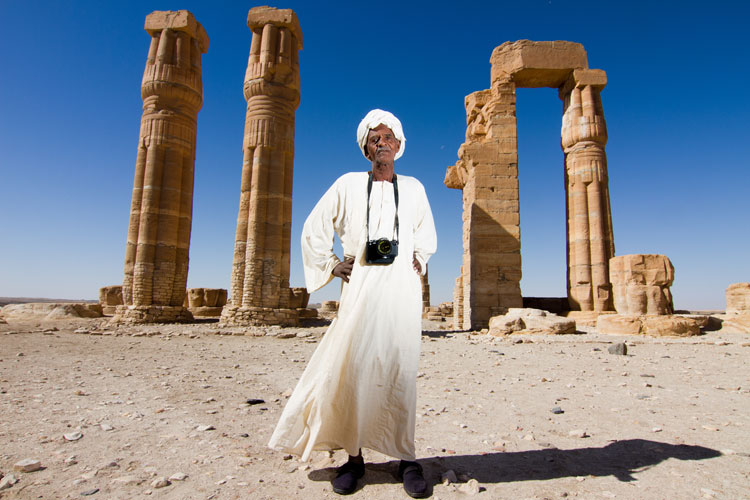
Guardian of Soleb temple. Image by Stuart Butler / Lonely Planet.
The wonderfully evocative Egyptian temple of Soleb is one of the historical highlights of north Sudan. The temple was built in the 14th century BC by Amenhotep III, the same Pharaoh who gave us the famous temples of Luxor in Egypt, and the design and carvings are similar.
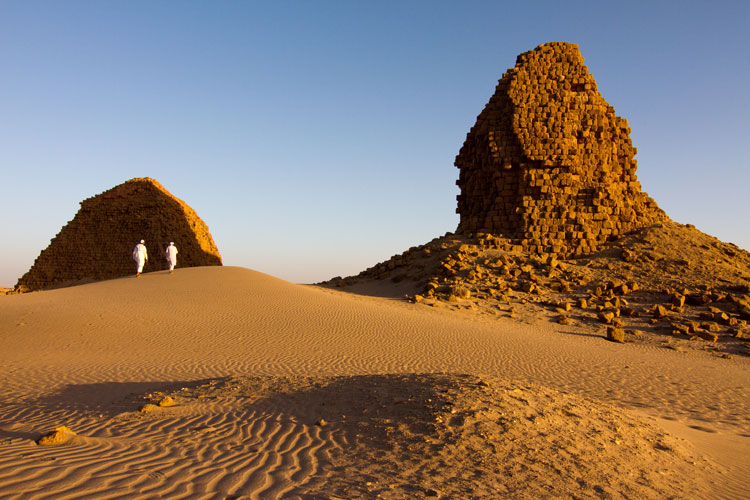
Nuri pyramids. Image by Stuart Butler / Lonely Planet.
The delightfully dilapidated pyramids of Nuri, near Karima, are set among a stormy sea of orange sand. They are some of the most romantic pyramids in Sudan. Dating from around the 7th century BC these are both the oldest and largest pyramids in the country.
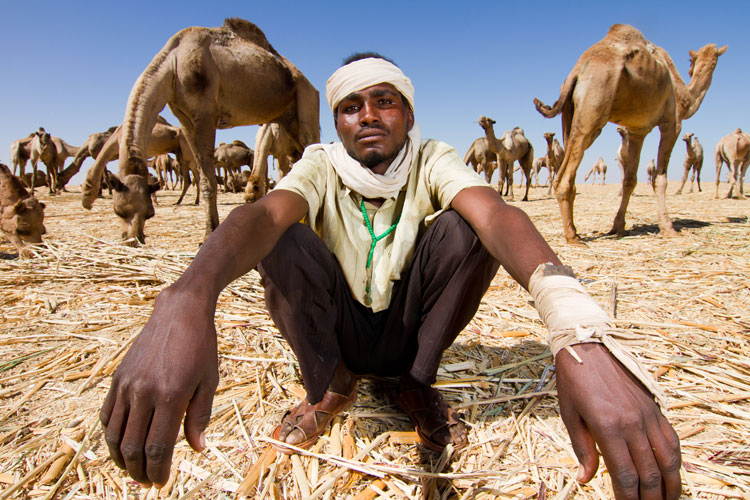
A nomadic camel herder from the troubled western region of Darfur taking camels to markets in Egypt. Image by Stuart Butler / Lonely Planet.
There were 300 camels in this group and it takes between one and two months to get them from Darfur to Egypt. These herders are very tough men and told me that they prefer to make the trek in summer because it's 'too cold' in winter (it was about 30 degrees Celsius on the winter's day I took this photo).
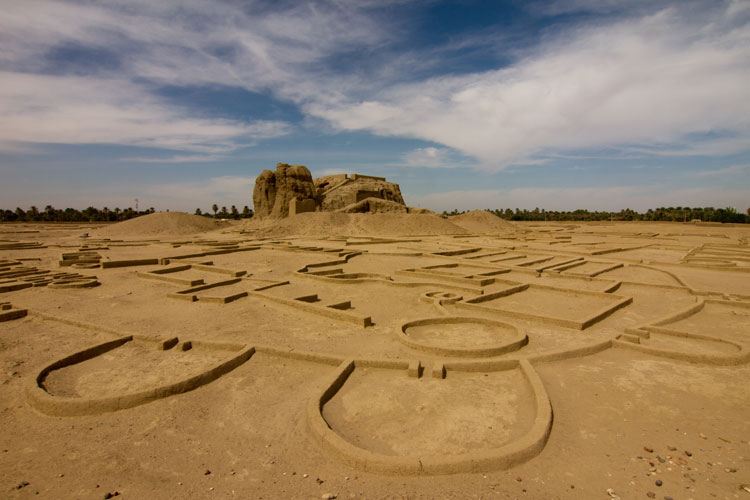
Kerma. Image by Stuart Butler / Lonely Planet.
The seemingly insignificant town of Kerma may have been largely left behind by the rest of the world today, but that wasn’t always the case. This is one of the oldest inhabited towns in Africa and a place of immense historical importance. The area around Kerma has been occupied for at least 8000-10,000 years, but the town reached its peak around 1800-1600 BC when it was capital of the Kingdom of Kush and an important trade centre during Egypt’s Middle Kingdom. It was at this time that Kerma’s kings built two giant mud-brick temples, known as deffufas; the oldest, and arguably largest, mud brick buildings on the continent. The western deffufa in the picture stood about 19m high and stretched 50m long. Nobody is really certain what it was used for but most agree it served a religious purpose.
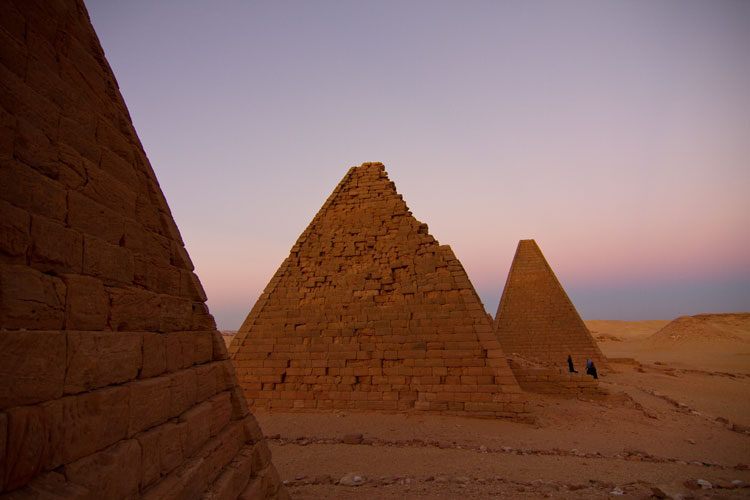
Karima pyramids. Image by Stuart Butler / Lonely Planet.
The modern town of Karima is a dusty Nile-side village of little import today, but that wasn't always the case. Jebel Barkal, the table-topped mountain hanging on the town’s south side, was sacred ground for the Egyptians at the time of the 18th-dynasty Pharaohs. Both they and the Kushites believed that the mountain was home to the god Amun.
At the base of the mountain are some well-preserved pyramids (pictured), the Temple of Amun and the fresco-decorated Temple of Mut dedicated to the Egyptian sky goddess.
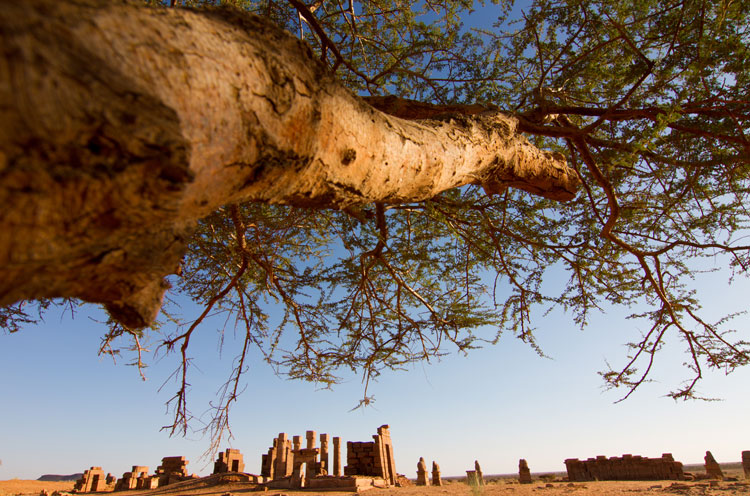
Naga's Temple of Amun. Image by Stuart Butler / Lonely Planet.
Naga consists of a large and well preserved temple of Amun dating from the 1st century (pictured) and the Lion Temple dedicated to the lion-headed god Apedemak. The exact purpose of the site remains unclear as it’s located in an area that has never really been inhabited.
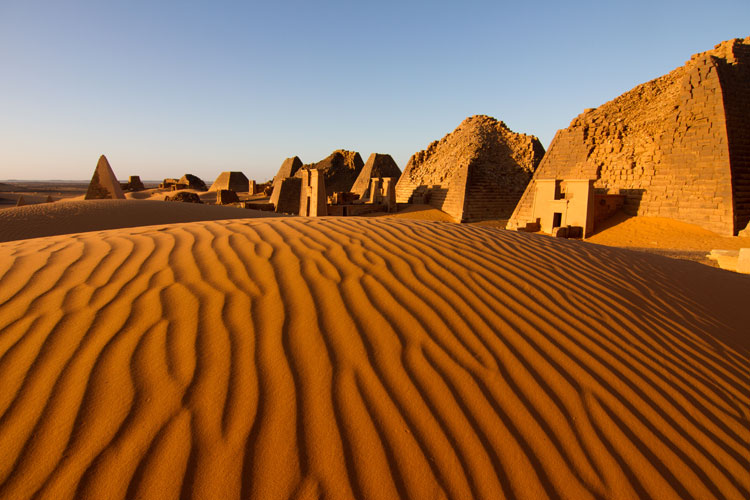
Begrawiya Pyramids (Meroe). Image by Stuart Butler / Lonely Planet.
There are two main groups of pyramids at Begrawiya, the most famous pyramids in Sudan, separated by several hundred metres of sandy desert. In total there are about 100 pyramids – or remains of pyramids.
The reason many of the pyramids are missing their tops is thanks to a 19th Century Italian ‘archaeologist’ who thought treasure might be contained within. Rather than going about the laborious task of opening them properly he merely chopped the tops off and, somewhat to the surprise of many, he did indeed find treasure!
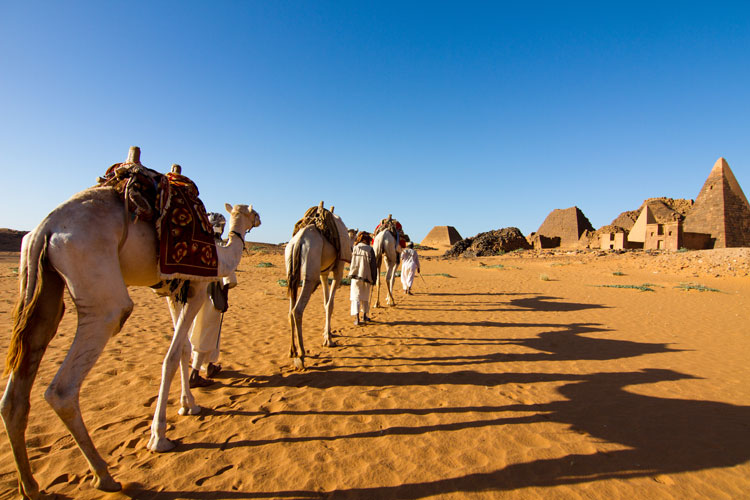
Camel men by the Begrawiya Pyramids, Meroe. Image by Stuart Butler / Lonely Planet.
Foreign tourists are very rare in Sudan but a handful of domestic tourists come from Khartoum at the weekends to enjoy camel rides around the Begrawiya Pyramids.
Stuart Butler is a Lonely Planet author, writer and photographer specialising in East and Central Africa. He tweets at @StuartButler2.